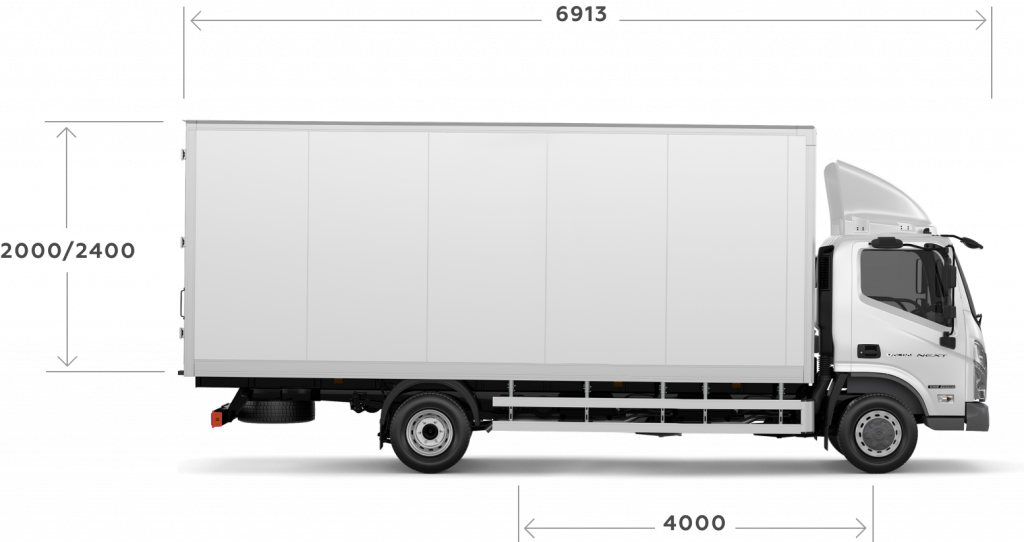
A medium-sized commercial vehicle called a box truck may also go by the names cube vehicle, cube truck, or straight truck. It is a flexible vehicle that can be operated with a standard driver’s license and is mainly used for transporting goods or freight. Box trucks are often used in many sectors, including but not limited to retail, delivery, and moving services.
The enclosed cargo space of a box truck—often referred to as a “box” or “cube”—is its key distinguishing feature. With a typical height of 7 to 8 feet, the cargo area is typically built out of reinforced fiberglass or aluminum and ranges from 10 to 26 feet.
Box trucks are available in several weight classes, ranging from light-duty to heavy-duty. The truck’s weight class determines the maximum load capacity and required engine size. Box trucks may also have additional equipment, including air conditioning, power steering, and hydraulic lifts designed to enhance driver comfort and cargo handling effectiveness.
This guide will lighten different sizes and types of box trucks, which can help you choose the most suitable model according to your specifications!
Advantages Of Box Trucks
Box trucks can be used for various purposes and are beneficial in many ways! Here are some examples of how they can be helpful:
- Box trucks are the best choice for carrying important, heavy things because of their roomy cargo spaces and high payload capacity. Fewer trips are required, saving time and money. This is because these trucks can transport large cargo on a single journey.
- They can protect against a range of weather conditions, theft, and damage while in transportation due to the entire enclosure of the cargo space. This feature is particularly beneficial for the transport of fragile or perishable items safely and securely.
- Box trucks include back or side doors and loading ramps, which enable the loading and unloading of cargo to be faster, safer, and more accessible.
- Box trucks can quickly go through limited spaces and narrow roadways since they are smaller than larger vehicles. This characteristic makes them ideal for delivering packages in urban or residential areas.
- These trucks are frequently less expensive to buy and maintain than larger vehicles or semi-trailers. For many businesses, they are a sensible choice because they also consume less gas and have lower insurance costs.
What Is The Standard Box Truck Size?
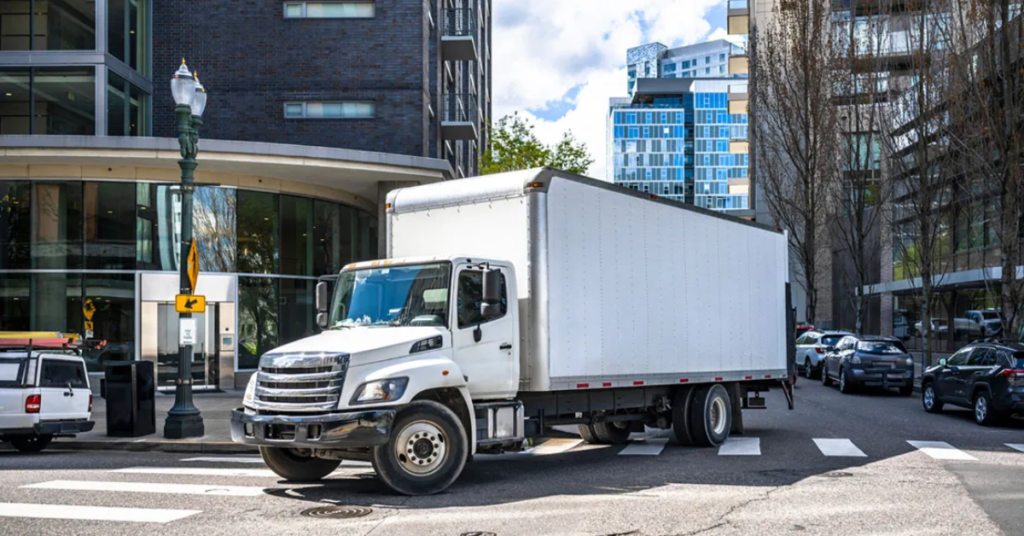
Usually, a box truck’s measurements refer to the trailer frame. A typical box truck will be 24 1⁄2 feet long, 8 feet wide, and approximately 8 feet high. A box truck’s cab section will typically be nearly 10 feet long.
Box truck trailers come in various sizes, but the most typical range from 48 – 53 feet, with 13.5 ft cargo height and an 8.5 ft. foot width. Depending on the size and layout of the trailer, the cargo capacity is from 1,000 to over 3,000 cubic feet.
Let’s look at the different types of trucks available based on designs:
Different Types Of Box Trucks
Each box truck is uniquely made and customized to meet the demands of its owner. Here are some examples:
1. Standard Box Truck
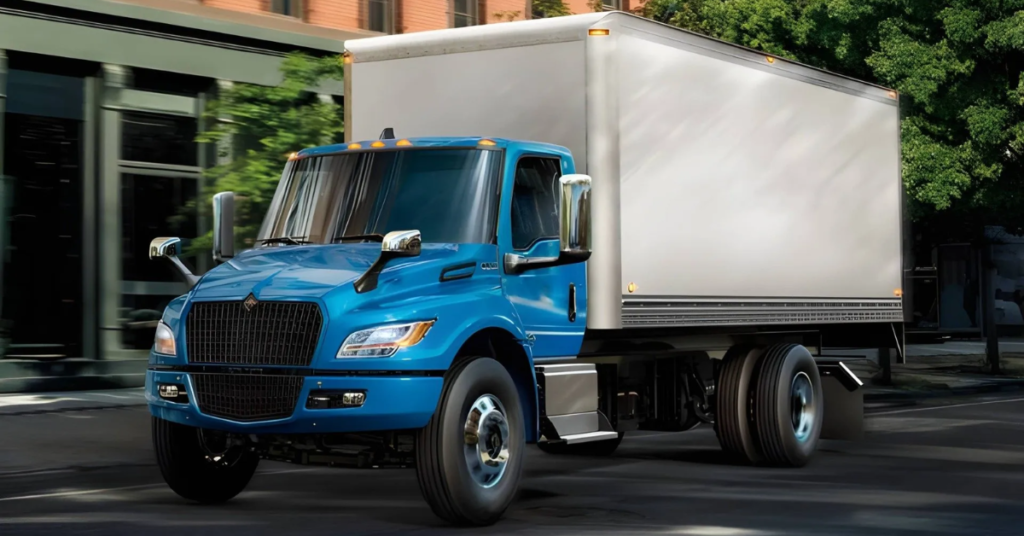
A standard box truck is a style of a commercial vehicle with a cab and chassis coupled to a rectangular cargo compartment. It comes in various sizes and designs and is frequently used for transporting materials or cargo.
Typical box trucks are well-liked by small enterprises and independent contractors and may be operated with a standard driver’s license. Standard box trucks typically measure from 10 to 26 feet in length, 6 to 8 feet in width, and 6 to 8 feet in height.
2. Low Cab Forward
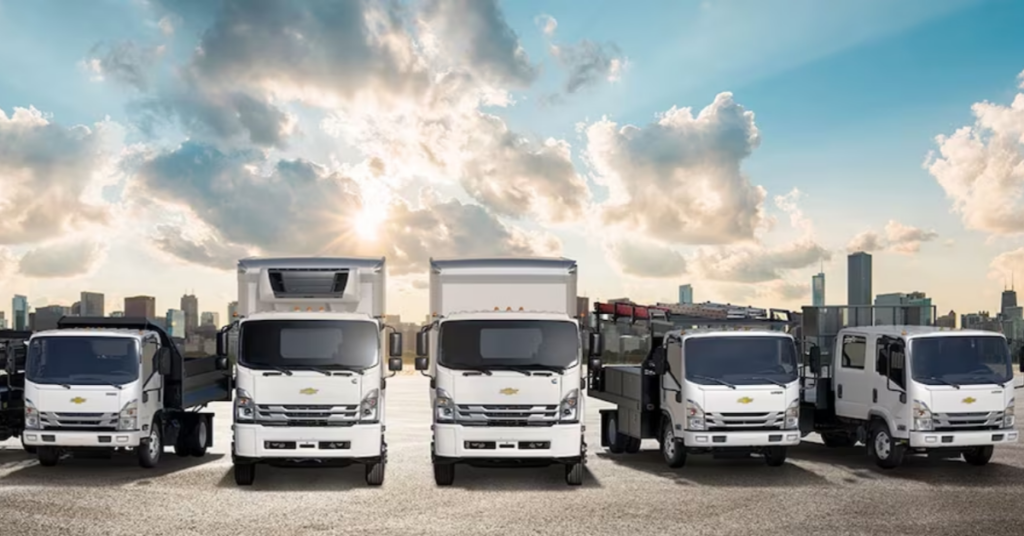
A commercial vehicle with a cab-over-engine configuration, or Low Cab Forward (LCF) box truck, place the driver over the engine for improved ability to see and maneuver in tight situations. Urban deliveries and other conditions involving frequent tight turns and narrow roadways sometimes call for the usage of LCF vehicles.
Depending on the type and manufacturer, low cab forward trucks typically have a length between 12 and 26 feet, a width between 6 and 8 feet, and a height between 8 and 12 feet.
3. Refrigerated Box Truck

A business vehicle with refrigeration equipment, such as a refrigerated box truck, delivers products that must maintain a specific temperature, including food or medications. Perishable or delicate commodities can be transported in the cargo compartment since it is enclosed and refrigerated to maintain the correct temperature.
Standard box trucks typically have lengths between 10 and 26 feet, widths between 6 and 8 feet, and heights between 6 and 8 feet. Refrigerated box trucks often have comparable measurements. The inside dimensions may be less due to the refrigerated compartment’s possible space requirements.
Related: Dump Truck Sizes | With Dimensions & Pictures
4. Stake Bed Trucks
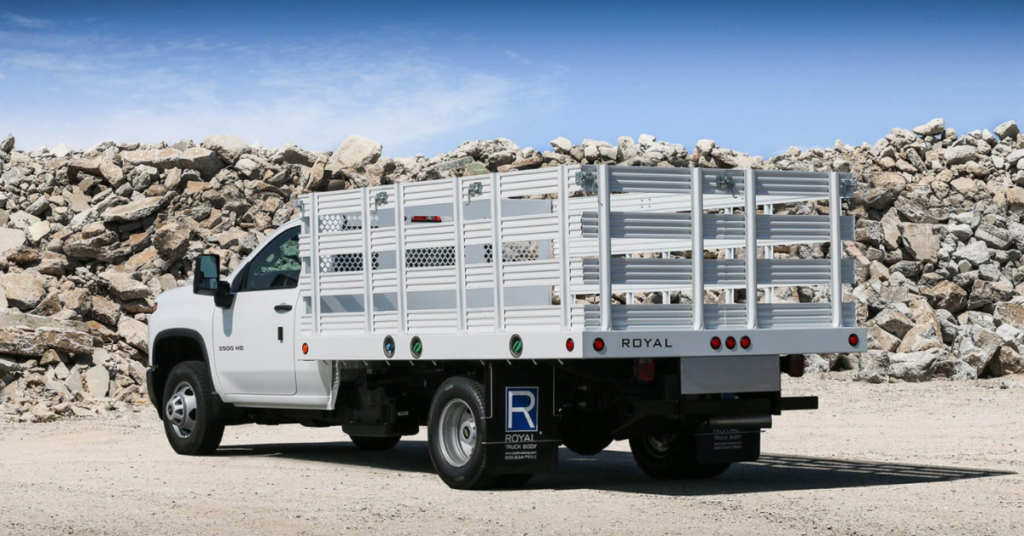
Commercial trucks with a flat cargo area and detachable side pegs or rails for securing cargoes are called stake bed trucks, sometimes known as flatbed box trucks. Building supplies, furniture, and other heavy objects that cannot be put into a regular box truck are frequently transported using them.
Stake bed trucks come in a broad range of sizes, but they usually measure 12 to 24 feet long, 7-8 feet wide, and 7-8 feet tall. The stake bed may be reconfigurable and detachable, enabling various load capacities and combinations.
5. Curtain Side Box Truck

An industrial vehicle known as a “curtain side box truck” has retractable curtains rather than solid walls on both sides of the cargo compartment. The curtain may be opened, making it easy to reach the cargo space. Deliveries of bulky or heavy materials frequently involve this sort of box truck.
Curtain-side box trucks are comparable to regular box trucks, measuring between 10 and 26 feet long, 6 to 8 feet wide, and 6 to 8 feet tall. The main distinction is that for easy loading and unloading, the walls of the luggage area are composed of movable curtain material.
Now let’s take a look at the most common box truck sizes for further guidance.
Common Box Truck Sizes
Here are the five most common Box truck sizes with their approximate cargo capacity and what they are mostly used for:
| Sizes | Cargo Capacity | Common Uses |
|---|---|---|
| 10 feet | Around 2,850 pounds | As a passenger van, for minor deliveries, and moving jobs. |
| 12-14 feet | Around 3,100 pounds | Appropriate for modest to medium-sized loads, including furniture transport, local deliveries, and moving chores. |
| 16-18 feet | Approximately 5,000 to 7,000 pounds | Deliveries, moving jobs, transporting large equipment. |
| 20-24 feet | Around 8,000 to 10,000 pounds | Heavier weights, such as those involved in long-distance hauling or relocation projects, are ideal. |
| 26 feet | Approximately 12,000 to 14,000 pounds | Heavy-duty commercial applications like long-distance transportation or extensive moves frequently include the usage of this equipment. |
Top 5 Best Box Trucks Available In The Market
Here is the list of the top five box trucks options to choose from:
1. Isuzu NPR HD Gas 28,000 GVWR
The Isuzu NPR HD Gas type is a rugged commercial vehicle designed for toughness and durability with a GVWR of 28,000 pounds. This medium-duty vehicle has a strong gasoline engine and features that maximize drivers’ and passengers’ safety, comfort, and productivity. It is also highly adaptable to a variety of business demands.
2. GM/Isuzu NPR-HD
A durable medium-duty commercial vehicle with outstanding adaptability that may meet the needs of many enterprises is the GM/Isuzu NPR-HD. It provides various features and options to increase performance, comfort, and safety while driving, including different body styles, engines, and technology. It is also available in several configurations.
3. Chevrolet Express 2500 Cutaway
The Chevrolet Express 2500 Cutaway is a commercial van that can be customized to fit a range of functions, including delivery, utility, and shuttle services. It is versatile and adaptable by design. The car has some safety features, comforts, and choices that enhance the driver and passengers’ efficiency, comfort, and convenience. It is also built to last.
4. Ford E-350 Super Duty
The Ford E-350 Super Duty is a popular choice for a wide range of business and personal endeavors thanks to its spacious cargo area and powerful engine. It also has a ton of comforts and features that enhance comfort, safety, and convenience when driving.
5. GMC Savana 3500 Medium Duty Cutaway
The adaptable GMC Savana 3500 Medium Duty Cutaway van can be customized to fulfill many commercial requirements, from delivering goods to ferrying passengers, making it a flexible option for businesses. It has a potent powertrain with safety, comfort, and productivity-enhancing features.
Related: Top 7 Hybrid Trucks Available in the USA 2023
How Much Do Box Trucks Usually Cost?
A six to ten-year-old 12-foot cube delivery truck is one example of a secondhand box truck that can be had for as low as $1,650. Prices for secondhand, more recent box trucks range from $12,100 to $24,000. Costs for box trucks that are less than two years old range from $30,000 to $41,000.
Conclusion
Box trucks are adaptable and often utilized for cargo transportation across various industries. Considering things like cargo weight, volume, and requirements for transport can help you choose the proper box truck size and specifications.
It’s critical to pick a size that can transport goods safely and effectively while fitting the cargo. Making an informed choice that best meets the company’s or industry’s demands may be aided by being aware of the various sizes and dimensions available for box trucks.




